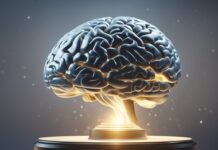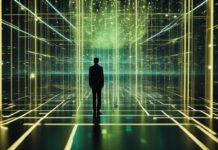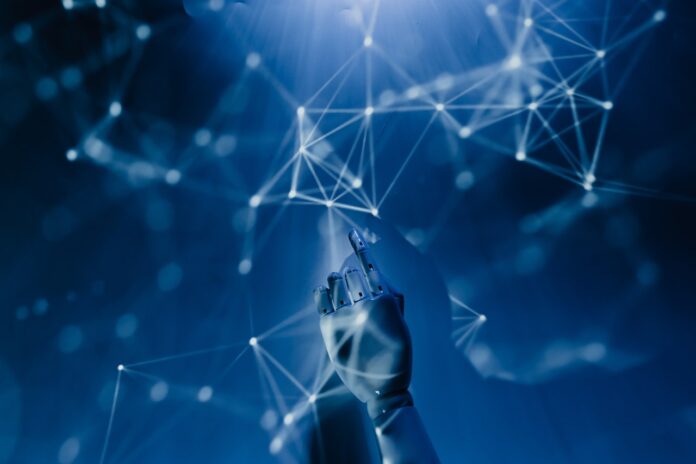
Our life and the whole world are constantly changing. Those changes have been very modest throughout millenniums and centuries. Life of people 5000 years ago was very similar as life of people 4000 years ago. The same goes for our world and most of history. Basically, nothing changed for hundreds or even thousands of years.
Note: We've accompanied this article also with documentary. You can check it out below.
Also, the world and life of people in the year 1500 CE (common era) was almost the same as life of people in 1600 CE. Sure, there were some minor changes, but really nothing significant with regards to big technological and industrial developments or with regards to day-to-day life. People of that time didn’t have electricity or any such groundbreaking technology that had a potential to change everything in lives of common people.
Note: If you'd like to read more about future of our world and life we'd recommend following book: "Heart of the Machine: Our Future in a World of Artificial Emotional Intelligence"
Yet, on the other hand, in the last 100 years we’re seeing such developments and changes much more frequently. And especially if we’re talking about the last 50 or even more, last 30 or 20 years. In recent years changes are so pronounced and frequent that we could easily say how 1 day of present times brings more changes than perhaps 10 years in historic times.
And it’s not only changes in technology. World population and everything in relation to it also changed dramatically over last 200 years. For example, as per Our World in Data – world population increased from 1 billion in 1800 to around 8 billion today.
Fun fact: Did you know that around 108 billion people have ever lived on our planet!
So, having all that in mind, it would be interesting to hypothesize what will our life look like in 30 years, or to be more specific in the year 2050.
In this hypothesis we will name different predictions that scientists and futurists have already made, but we’ll also do some additional thinking and speculations about potential everyday life of people living in 2050.
Related:
What Will Life Look Like – Predictions for 2050?

Okay, let’s first look at scientific predictions in several different fields. First, we will see what could potentially happen with technological advancements, population, demographic shifts and political & social changes.
After that we’ll hypothesize some more, solely based on some speculations and imagination.
Advancements in Technology by 2050
The continued development of artificial intelligence, robotics, and other technologies will revolutionize and change many aspects of life, including transportation, healthcare, entertainment, education and much more. Self-driving cars and drones will become more common, while virtual reality will transform the way we experience day to day life.
So, let’s dive deeper into these with special emphasis on artificial intelligence.
Artificial Intelligence in 2050
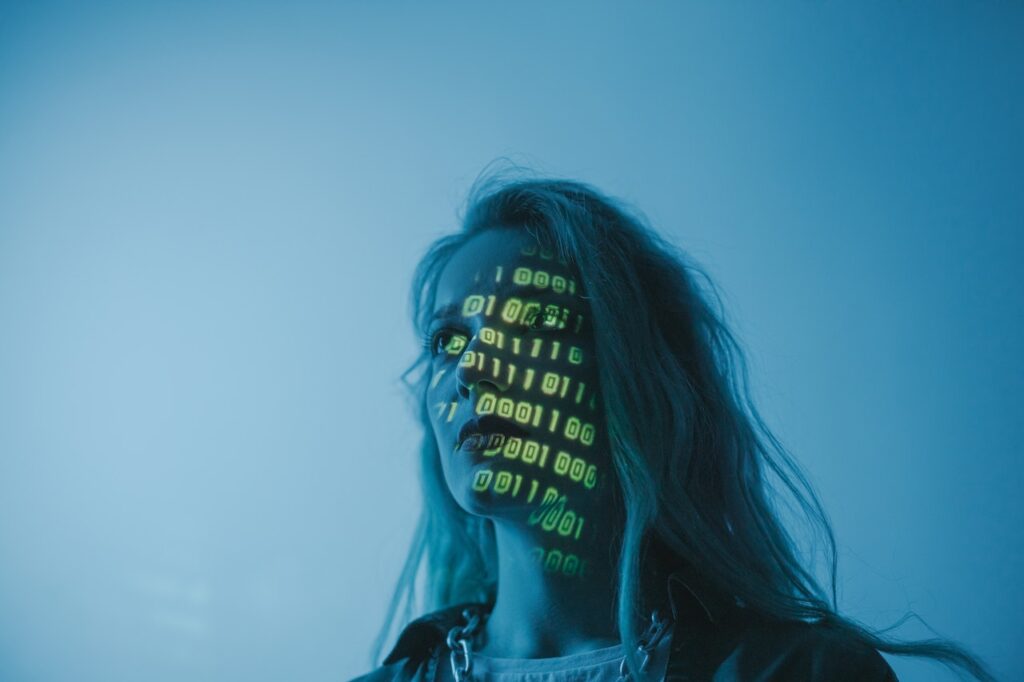
Everybody, especially nowadays, is talking about complete revolution that is about to happen to our lives and to the world because of artificial intelligence. It is now a matter of time when we will have so-called artificial general intelligence or AGI. Perhaps we’re already there and perhaps we’re only a couple of months away.
General artificial intelligence can change almost every aspect of our lives. Our jobs, our communication, our way of driving cars. Heck even our love lives.
We’ve written several articles concerning artificial intelligence and its potential impact on society and our lives. And conclusion is mostly similar – the impact will be enormous and not always positive.
So, with that said, let’s look at potential impact on society from a couple of aspects:
- Automation of Jobs: This one is almost inevitable. It will happen. AI will automate many jobs that are currently performed by humans, which will lead to job loss and significant changes in the labor market. Now, it depends how will impacted people re-qualify their skills so that they remain in the job market and bring food to the table. Perhaps society will introduce universal basic income and resolve situation in that way. And perhaps society (or AI) will introduce maximum amount of wealth per person and distribute money that way.
- Healthcare: In 2050 AI will revolutionize healthcare by improving diagnosis, treatment, and patient outcomes. AI will probably be used to develop personalized medicine, predict disease outbreaks, and assist in surgical procedures. Furthermore, virtual and mixed reality glasses are already used for surgical procedures or for students. This together with the assistance of AI will be used even more. Probably every hospital will have some kind of AI assisted surgeries. And some hospitals will probably be completely automated where 90% of surgeries will be done by robots and AI.
- Transportation: By 2050 AI will completely transform the transportation industry by enabling self-driving cars, trucks, and drones, which will lead to improved safety, reduced traffic congestion, and increased efficiency. However, while it will certainly lead to improved safety, there are also concerns that self-driving cars will decrease humans’ ability for free will driving. In combination with potential new CO2 policies regarding driving, it could easily happen that people will have certain driving miles limits per month and if they exceed that, then AI will stop the car from moving until next month. Additionally, if AI is some kind of program (and it is), then potentially it could be hacked, leading to reprogramming of car driving abilities which could then lead to fatalities and programmed crashed on the road.
- Education: AI will enhance education by providing personalized learning experiences, intelligent tutoring systems, automated grading, virtual learning environments, curriculum development, education analytics and much more. AI-powered tools will help students learn at their own pace and provide immediate feedback. On the other hand, AI could also completely change how (and what) we learn. More specifically, if by 2050 we’ll have different intelligent chips in our brains which are connected to AI – well then, we will be able to learn everything in a matter of minutes or even seconds. That’s really great from one perspective but scary from another perspective. Namely, some (rich) people will surely get this revolutionary technology sooner than average Joe, meaning they will have significantly greater learning possibilities than other people. This could lead to even more inequalities between rich and poor. Just imagine the possibilities. For example – couple of hundred richest people having this technology 1 year before everyone else. They’d be then like character from movie (and TV series) Limitless.
- Finance: AI could improve financial services by helping with fraud detection, risk assessment, and portfolio management. AI could also help with the automation of routine financial tasks, such as customer service inquiries. Actually, narrow AI is already used for those things. By 2050 AI will be used for much more advanced scenarios in finance like:
- Predictive Analytics: AI could be used to predict future financial trends and identify potential risks and opportunities. This could help financial institutions make more informed decisions and improve their performance.
- Natural Language Processing: AI-powered natural language processing could be used to analyze unstructured data, such as news articles and social media posts, to identify emerging trends and sentiment in the market.
- Sentiment Analysis: AI could be used to analyze sentiment data to predict consumer behavior and market trends. This could help financial institutions better understand their customers and make more targeted marketing decisions.
- Blockchain Analytics: AI could be used to analyze blockchain data to identify potential fraud and suspicious transactions. This could help improve the security and transparency of blockchain-based financial transactions.
- Quantum Computing: Quantum computing could be used to accelerate the analysis of substantial amounts of financial data, enabling faster and more accurate decision-making in finance.
- Robo-Advisors: AI-powered robo-advisors could be used to provide personalized investment advice and management services to individuals. This could help democratize access to investment management and improve financial literacy.
So, there will surely be a lot of changes in every industry and every field. But what about the population itself?
World Population and Demographics in 2050
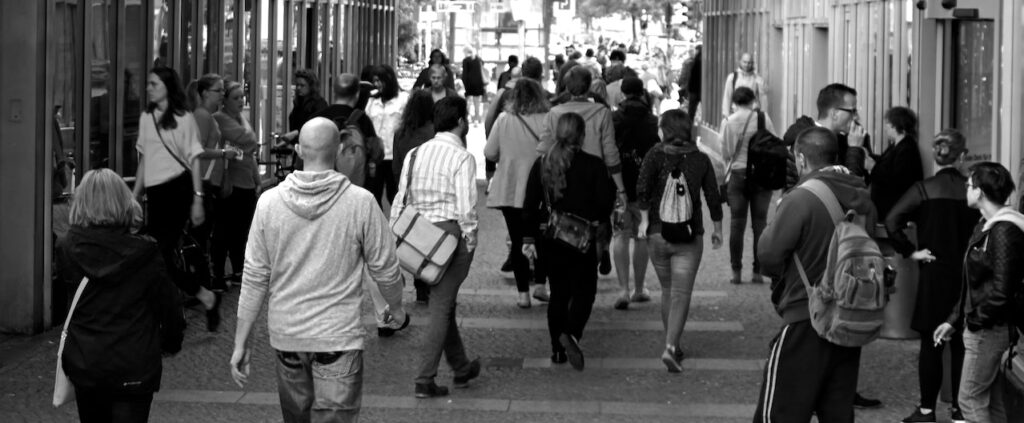
As we mentioned at the beginning, world population is in constant growth. Especially in the last 200 hundred years. We grew from 1 billion in 1800 to more than 8 billion now. Actually, in only 50 years, the world population doubled. 1960’s started with a population of 3 billion and in 1975 we were already above 4 billion. More than 1 billion additional people in only 15 years. Growth continued drastically and it will continue further. But not so rapidly.
Namely, population growth is slowing down, especially in so-called developed countries. Nonetheless, by 2050 we can still expect that the population will grow. According to United Nations report current world population of 7.6 billion is expected to reach 8.6 billion in 2030, 9.8 billion in 2050 and 11.2 billion in 2100.
So, by 2050 we’re expecting an additional 1.8 billion people. That’s not too much, especially compared to some previous periods. However, changes will be more drastic in different areas of the world.
In terms of regional trends, the population of Africa is expected to experience the most significant growth, with the UN projecting that the continent’s population could nearly double by 2050. Meanwhile, the populations of some countries, particularly in Europe and East Asia, are expected to decline as a result of low birth rates and an aging population. These demographic shifts will have significant implications for issues such as healthcare, economic development, and social welfare by the year 2050.
Now, if we look a bit closer at what could happen from demographic perspective we could expect:
- Older people: As life expectancy continues to increase, the global population is projected to age significantly. The number of people aged 60 years or older is expected to more than double by 2050, reaching around 2.1 billion people.
- Urbanization: The world’s population is increasingly moving towards urban areas, with more than two-thirds of the population projected to live in cities by 2050. This trend is expected to have significant implications for issues such as infrastructure, transportation, and environmental sustainability. Nonetheless, this is only if we follow current trends which could not be the case in 20 years. Namely, many people are thinking about living outside cities, and this will become even more prevalent if remote work continues to play a big role in today’s workforce.
- Migration: International migration is projected to continue to play a significant role in shaping global demographics, with increasing numbers of people seeking to move to other countries in search of better economic opportunities or to escape conflict or persecution. This will leave some countries almost completely empty. However, another scenario could also happen depending on how the world political situation evolves. In recent years, nationalism is becoming more and more pronounced in many countries. If this trend continues, it could easily happen that some countries will close their borders altogether.
- Changing Fertility Rates: Fertility rates are projected to decline in many countries, particularly in developed countries, where birth rates are already low. However, some developing countries may continue to experience high fertility rates, which could result in significant population growth in those places.
So basically, in 2050 we can expect 20% more people on Earth and slightly different demographics than it is today. Of course, that is if we don’t end up in some kind of world war.
Having said that, it is time to move on to more interesting and intriguing potential scenarios which could happen by 2050.
Love life in 2050

Let’s first talk about our love life. This is one segment of our lives that is of the utmost importance, yet it seems that it is changing dramatically year after year. And it will change even more by the year 2050. We are already witnessing that people are not socializing as they have been before. Young people are using dating apps for quick “romantic” gatherings, and more and more of them are not interested in any kind of long-term relationships. This kind of behavior leads to even more differences between people who are very pretty and people who are not so lucky in that category. So, pretty people get all the action and average looking Joe is sitting at home playing video games. Namely, In 2019, The Washington Post shared a graph highlighting that 28 per cent of men under 30 hadn’t had sex in the last year – a precipitous rise of sexlessness among young men compared to previous decades.
This sexlessness will be even more pronounced in 2050. It could lead to a real crisis for young people and for the demographics of the world.
But what about technology and love life?
We’ll we’ve written about this topic extensively in our article titled: “What will sex robots do to humanity?”.
We arrived at the conclusion, that if love dolls and sex robots continue to develop at current speed rate, then we’ll have a real problem for couples. Namely, by year 2050 these robots will become so realistic and affordable that many people will decide to “use” them instead of real people.
Just imagine what could happen if only 10% of people worldwide decide to choose those robots as their main love partner. It would be devastating for population growth. And for world normality, for that matter.
This topic leads us to another one that is very connected. And this one is – you guessed it – virtual reality.
Virtual Reality in 2050
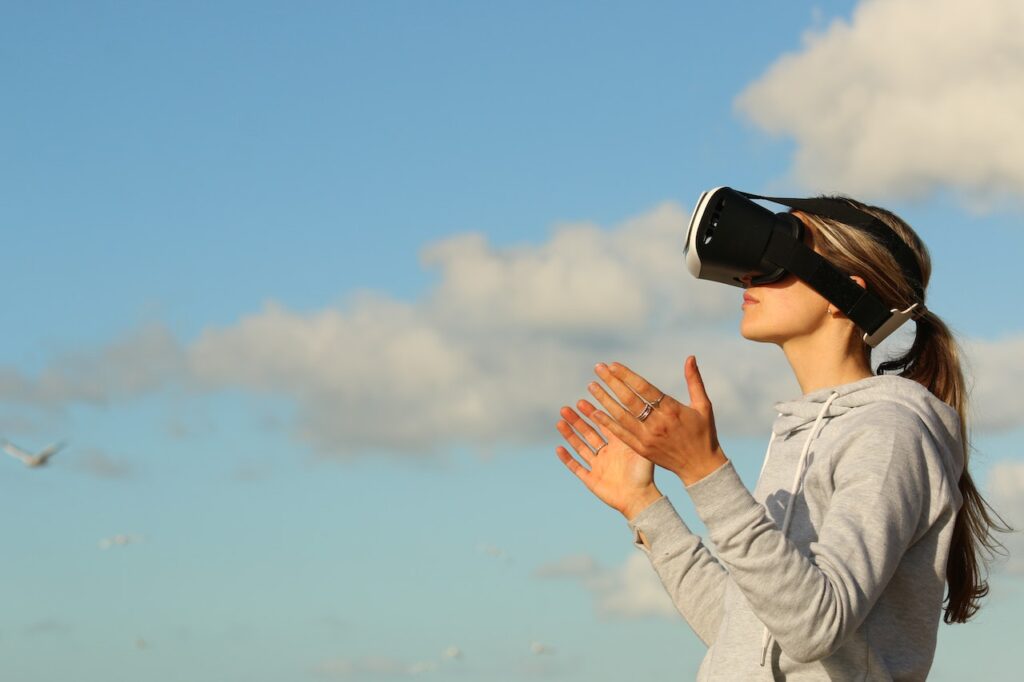
We touched upon this topic already in this article but only marginally. Now we’d like to go slightly deeper.
Virtual Reality, Augmented Reality, Mixed Reality – those are all technologies already available today. Whether we’re talking about Microsoft HoloLens, Oculus VR or dozens of others – technology is there but it is not widely used. Mostly because devices are still somewhat expensive and there aren’t many day-to-day scenarios available.
But this will soon change. With advancements of metaverse and rendering technologies, it is obvious that people will live more and more in so called virtual world.
What does that mean, you may ask?
Well, if metaverse and virtual reality technology advances as expected – people will spend a lot of time laying on their couch (or in some kind of matrix capsule) and living completely different life in virtual world. This world will both graphically and tactually resemble real world but as a substitute people will be able to do what they want when they want it.
Now this is dangerous, because our mind and our thoughts have not yet evolved to use these kinds of technologies responsibly. Sure, some people will use it responsibly and will not spend majority of their time in virtual world. But many people will. And they will completely lose their connection with normal (real) world.
Just imagine what is already happening with smartphones and how many people spend 5-10 hours looking at their screens. Now multiply current addiction that people have for social media and multiply this by 100. Addictiveness level of virtual reality will be much higher than current social media or most popular games. It will be much higher because it will be significantly better experience.
And that will be a big problem. Because people are addictive beings. Based on that, one could easily predict that in 2050 people will spend even more time immersed in their favorite technology. This will then again cause challenges for productivity, workforce, and overall world population.
And this leads us to the last point of this article which is: “How will the day-to-day life of common people look like in 2050?”
Everyday Life in 2050

Okay, so let’s first start with the obvious one. Will we have similar climate as we do today, or will we walk around with portable air conditioners? Well, scientists believe that if we continue with growth of the greenhouse emission at today’s rate that this could lead to additional global warming of about 1.5 degrees Celsius (2.7° degrees Fahrenheit) by 2050.
Now, while this is not a large number, it could have significant implications for our planet and thus for us. Nonetheless, our day-to-day lives will be mostly similar from that perspective. Sure, some places on Earth will have bigger consequences, especially because of rising sea levels, but majority of people on Earth will be ok.
Your Day in 2050
So, you wake up in 2050 and your day begins. You’re feeling kind of hot, because the weather is 1.5 degrees Celsius warmer but you’re ok with it. You are woken up by your house that has a built-in alarm clock and uses artificial intelligence to calculate exactly when is it best time for you to wake up. It speaks to you in pleasant, yet loud enough voice (similar like voice that speaks to Tom Cruise in Vanila Sky). Your love doll sleeps beside you and she is starting to wake up. Actually, she never went to sleep but she is pretending. Of course, robots don’t need any sleep. But they also have AI built in, so they behave in a way to please their humans (for now at least).
You get up, your coffee is ready for you in pill form and your favorite podcast is already running. Podcast is not being run by humans but by realistic actors that are created by AI. Those actors discuss topics that are created ad hoc based on your interests this morning. And you actually don’t have to click anything. Elon’s Neuralink is running in your brain and you control your house with your thoughts. It’s not anymore only internet of things (as we have it today). It is internet of connected thoughts and machines.
While this is beneficial for most people and they opted in for this “solution”, there are some people who resist chip in their brain. They mostly live in their old apartments and live lives like in 2020’s.
Nonetheless, most people are “hooked”.
Okay, so back to imaginary person. Let’s call him Joe from now on.
Life Routines in 2050

After waking up, swallowing coffee and nutrients pill (vegan of course), Joe goes to the bathroom. There he is doing the same things as people did for centuries. He takes number 2 and number 1 simultaneously. Nothing changed from that perspective. Sewerage systems and toilets stayed mostly the same. The only difference is that Joe’s toilet now has digital display connected to entire house and he receives instant diagnosis of his stool. System analyses stool immediately, connects to Health AI system, and provides Joe with essential information about his health. Most days everything is ok, but sometimes the health system makes a mistake and scares Joe by saying that there is a good probability that he has cancer.
This is not that day.
Everything is alright with Joe’s bowel movement and his stool.
The next half an hour is mostly the same as it was for people living 30 years ago. He brushes his teeth. Only difference here is resemblance of his stool diagnosis system. Namely, modern toothbrushes in 2050 can also diagnose some standard dental problems and they can also ring your dentist. In Joe’s case, his dentist is actually human, but in many cases around the world there are so called robo-dentist booths where robots fix minor dental problems.
Joe’s teeth are fine, so he continues with his day and gets ready for work. His work is of course being done from home. Namely, Joe is Quantum Data Analyst, so he is working remotely all the time. His company MicroApple does not have any offices.
Employment in 2050

So, the day goes on and Joe is sitting mostly in front of his screen. The distinction from today’s IT workers is only in the type of screen he uses. Namely, computation power is embedded in Joe’s house, and he can project screen wherever he wants. And mostly he likes to be on his couch, laying down and projecting his screen over his head. That way he does not strain himself physically too much.
Workdays in 2050 are not 8 hours anymore, but 4 hours. At least for Joe, and for majority typical workers. And in 2050, typical workers are workers who are employed in some kind of technological and IT company.
So, Joe works for 4 hours and then he plays with Lucy for an hour or two. Lucy is his robot love doll, of course. Lucy never says no. Never ever. She is programmed that way, and additionally, Joe has the knowledge to reprogram her in a way he wants.
After his “play”, he always like to vape. Yes, vapes will still be there in 2050, but instead of nicotine, people will be able to create their own vape liquid that will have any desired effect.
Joe decided to use vape liquid that raises his serotonin levels to almost dangerous levels. But he is happy all the time. At least that’s what his brain is telling him.
Joe has only one friend and they see each other face to face only 3 times a year. They mostly communicate remotely via virtual reality glasses and metaverse.
Now, most of his day is already over. He woke up, did his toilet things, worked for a couple of hours, indulged into romance with Lucy and now it is dinner time.
For dinner he has some kind of sausages made of bugs. He doesn’t mind. With artificial sweeteners and artificial taste sensors everything tastes good.
After dinner he watches some news. All news in 2050 are created by AI. There are no real anchors or journalists. The same goes for movies. Joe likes to watch movies every night and always Tom Cruise movie.
Now you might ask – wait wait, but Tom Cruise will probably be long gone by 2050.
And you’ll be right, except that Tom Cruise is now created by AI and acts in any movie Joe prefers. So, one night Joe watches Tom Cruise in Titanic, another night in Fight Club and then the third nigh Tom Cruise is in mashup of all Clint Eastwood’s movies.
After the movies, Joe is ready to go to sleep. Lucy is already prepared and waiting for him in her nightgown. Just before sleep, Joe usually asks Lucy to give him special massage that will make him sleepy and happy. He also prefers that she sings Céline Marie Claudette Dion songs during massage.
Lucy is always glad when Joe is happy, so she drifts into (fake) sleep. And Joe does the same.
Eager for next exciting day…
Another repetitive day filled with what he thinks is happiness.
Conclusion
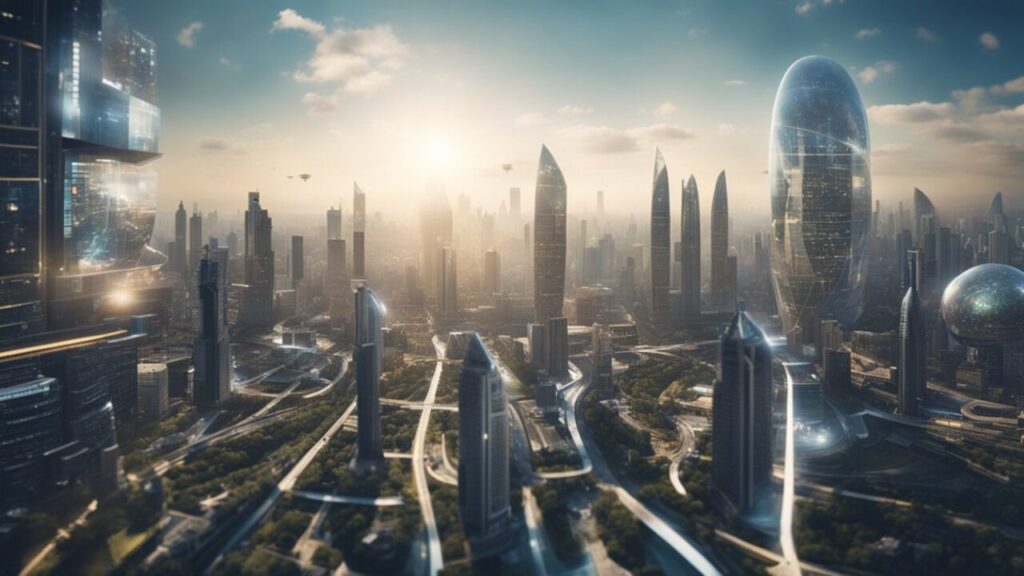
So finally, what will the world look like in 2050?
Life and world in 2050 will be shaped by unparalleled technological advancements, demographic shifts, and societal changes. The route of our world will shift dramatically in the next decades. The intersection of artificial general intelligence, robotics, and other emerging technologies will revolutionize all parts of life, from healthcare and education to transportation and finance.
And, as mentioned, the everyday life of an average person will also look very different by 2050.
We can only hope that, despite the potentially intimidating technological advancements, the future will be brighter, and many more people will be happier.
Note: If you’re interested in similar articles we’d recommend:











